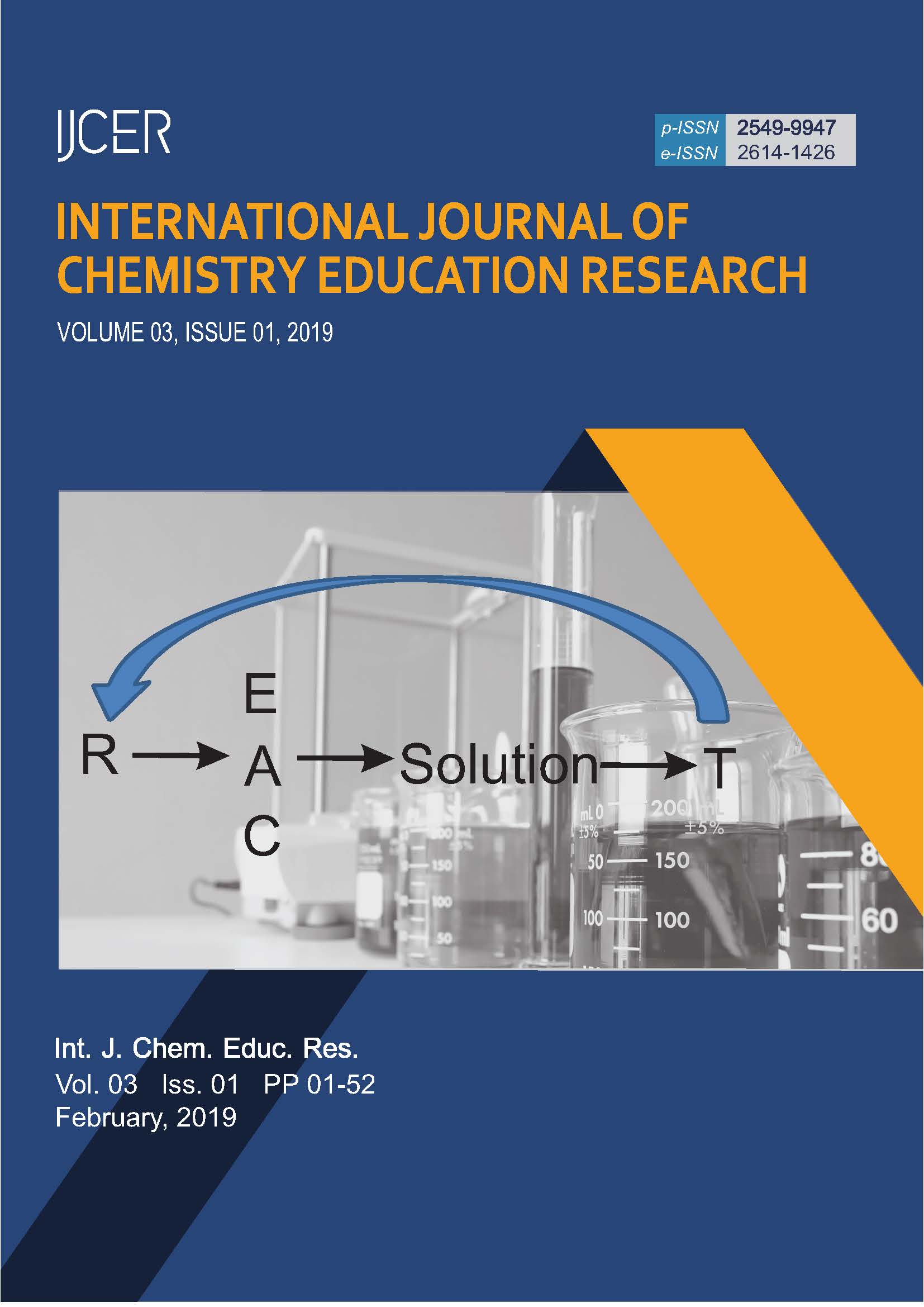Main Article Content
Abstract
The hoax informations that spread through social media had a negative impact on society. Therefore, research had been conducted in Gedongtataan Upper Secondary School No.1 to describe the effectiveness of problem-based learning model on hoax informations in improving students' critical thinking skills. This study was used the matching only pretest-posttest control group design. The sample in this study was the 11th grade of IPA 4 (experimental class) and the 11th grade of IPA 5 (control class) which was obtained by using purposive sampling technique. The results showed that the average n-gain in the experimental and control classes was 0.7 and 0.6, respectively. Based on this, it could be concluded that the problem based learning model on the hoax informations was effective in improving students' critical thinking skills.
Keywords: critical thinking skills, hoax informations, problem-based learning.
Article Details
Author retain copyright and grant the journal right of first publication with the simultaneously licenced under A Creative Commons Attribution (CC-By-SA) 4.0 License that allows others to share the work with an acknowledgment of the worsk's authorship and initial publication in this journal.
References
- Author Team, Paradigma Pendidikan Nasianal Abad XXI, Badan Jakarta, Standar Nasional Pendidikan. (2010).
- D. A. Saputri, & S. Febriani, BIOSFERJTPB, 8, 1, pp. 40-52, (2017).
- D.D. Sari, “Penerapan Model Problem Based Learning (PBL) untuk Meningkatkan Kemampuan Berpikir Kritis Peserta Didik pada Pembelajaran IPA Kelas VIII SMP Negeri 5 Sleman” Bachelor, Thesis, State University of Yogyakarta, Yogyakarta, 2012.
- F. Aini, R. Saleh, & M. Comn, JIM FISIP Unsyiah. 3, 3, (2018).
- Fraenkel, J.R., N.E, Wallen, & H.H. Hyun, How to Design and Evaluate Research in Education. (Mc. Graw Hill. Inc, London, New York, 2012).
- I. K. Puspita, & I. R. Suwarma, ICMScE 895, 1, pp. 1-4, (2017).
- I. K. Reta, JPPIPAI, 1, 2, pp. 1-17, (2012).
- I W. Redhana, R. A. Sudiatmika, & I. K. Artawan, JPP, 42, 3, pp. 151-159, (2013).
- I W. Redhana, JPP. 46, 1, pp. 76-86, (2009).
- M. A. Lumbu, JPPK, 7, 2, (2018).
- Mukminan, “Peningkatan Kualitas Pembelajaran Pendayagunaan Teknologi Pendidikan” Proceedings of the National Education Technology Colloquium (PNETC).(Universitas Negeri Surabaya. Surabaya, 2014), pp. 1-10.
- M. Ulfa, JPPK, 7, 2 (2018).
- R. H. Ennis, Critical Thinking (University of Illinois: Urbana-Campaign, 1989).
- R. J. Stiggins, Student-Centered Classroom Assessment Second Edition. Upper Saddle River: Prentice-Hall, Inc. (1997).
- R. Mufrihandhanu, Mie Instan yang dicampur Betadine, [online]: https://kumparan.com/@kumparannews/video-eksperimen-mi-instan-dicampur-dengan-betadine, Available (2017, December 17)
- R. R. Hake, AJP, 66, 1, pp. 64-74 (1998).
- S.F. Zuria, & T. Suyanto, Kajian Moral dan Kewarganegaraan. 6, 6, pp. 565-580, (2018).
- S. Zubaidah, JTPPP, 3, 3, pp. 278-411, (2017).
- T. Herman, Educationist, 1,1, pp. 47-56, (2007).
References
Author Team, Paradigma Pendidikan Nasianal Abad XXI, Badan Jakarta, Standar Nasional Pendidikan. (2010).
D. A. Saputri, & S. Febriani, BIOSFERJTPB, 8, 1, pp. 40-52, (2017).
D.D. Sari, “Penerapan Model Problem Based Learning (PBL) untuk Meningkatkan Kemampuan Berpikir Kritis Peserta Didik pada Pembelajaran IPA Kelas VIII SMP Negeri 5 Sleman” Bachelor, Thesis, State University of Yogyakarta, Yogyakarta, 2012.
F. Aini, R. Saleh, & M. Comn, JIM FISIP Unsyiah. 3, 3, (2018).
Fraenkel, J.R., N.E, Wallen, & H.H. Hyun, How to Design and Evaluate Research in Education. (Mc. Graw Hill. Inc, London, New York, 2012).
I. K. Puspita, & I. R. Suwarma, ICMScE 895, 1, pp. 1-4, (2017).
I. K. Reta, JPPIPAI, 1, 2, pp. 1-17, (2012).
I W. Redhana, R. A. Sudiatmika, & I. K. Artawan, JPP, 42, 3, pp. 151-159, (2013).
I W. Redhana, JPP. 46, 1, pp. 76-86, (2009).
M. A. Lumbu, JPPK, 7, 2, (2018).
Mukminan, “Peningkatan Kualitas Pembelajaran Pendayagunaan Teknologi Pendidikan” Proceedings of the National Education Technology Colloquium (PNETC).(Universitas Negeri Surabaya. Surabaya, 2014), pp. 1-10.
M. Ulfa, JPPK, 7, 2 (2018).
R. H. Ennis, Critical Thinking (University of Illinois: Urbana-Campaign, 1989).
R. J. Stiggins, Student-Centered Classroom Assessment Second Edition. Upper Saddle River: Prentice-Hall, Inc. (1997).
R. Mufrihandhanu, Mie Instan yang dicampur Betadine, [online]: https://kumparan.com/@kumparannews/video-eksperimen-mi-instan-dicampur-dengan-betadine, Available (2017, December 17)
R. R. Hake, AJP, 66, 1, pp. 64-74 (1998).
S.F. Zuria, & T. Suyanto, Kajian Moral dan Kewarganegaraan. 6, 6, pp. 565-580, (2018).
S. Zubaidah, JTPPP, 3, 3, pp. 278-411, (2017).
T. Herman, Educationist, 1,1, pp. 47-56, (2007).




